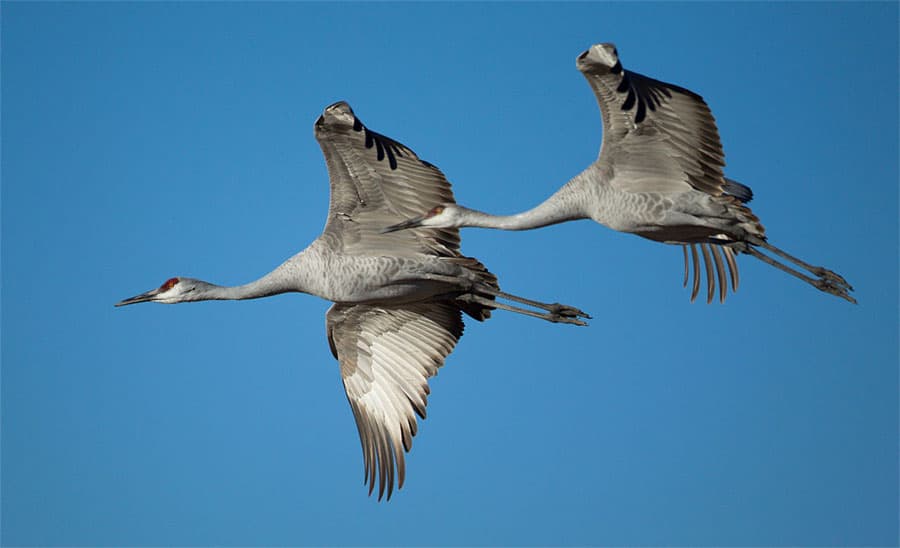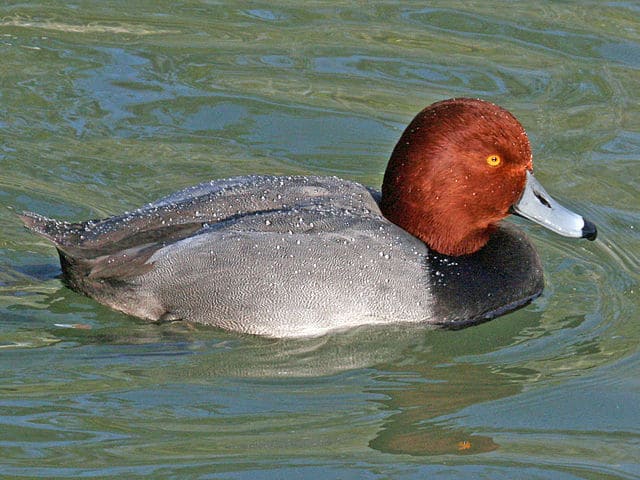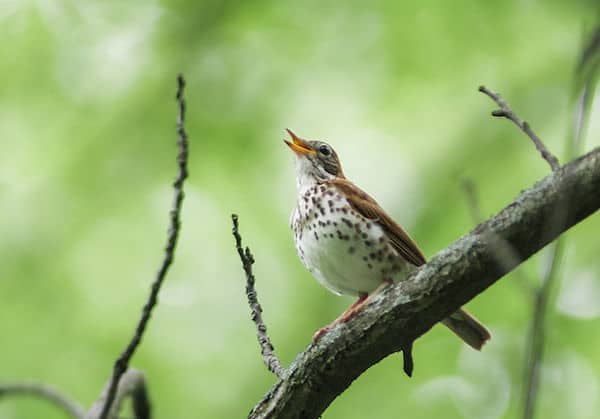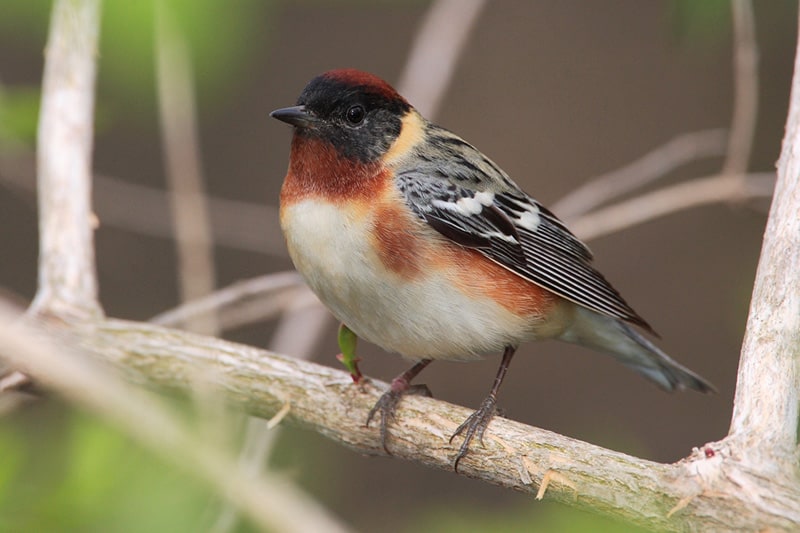The sandhill crane is a tall, mostly gray bird with a red patch on the head and a white patch on each cheek. Sandhill cranes range from 42 to 46 inches in length. In flight, sandhills show both a long neck and long legs.
Young sandhills lack the red crown, and in summer many adults show a lot of rusty brown body feathers. It’s important to remember that the sandhill crane differs from the great blue heron in three obvious ways: the sandhill has a large bustle of feathers on the tail, it has a much stockier body, and it flies with the neck extended, not folded in.
Listen For
A low, rattling graaaahk! often compared to the rattle of an American crow, but louder. This call from flocks flying high overhead may be your first clue to the presence of sandhill cranes.
Find It
Widespread and common, especially during spring and fall migration, when large flocks may be seen overhead or foraging in fields, wet prairies, and large marshes.
Feeding Behavior
These opportunistic foragers consume a variety of plant and animal matter. You can find sandhill cranes gleaning for prey on the ground or in shallow marshes. Animal prey compromises a small percentage (5-10 percent) of the crane’s diet but is important because it provides amino acids and calcium that are rarely available in grain.
Nesting Behavior
Sandhill cranes enjoy marshy habitat in which to nest, so they choose locations with standing water and emerging aquatic vegetation. It is not uncommon to see floating crane nests because it separates their eggs from terrestrial predators. Floating nests are made of aquatic vegetation, mud, grass, sticks, and moss.
Once sandhill cranes mate, they mate for life. Mating is usually delayed to two to eight years of age. Only one to three eggs are laid per clutch. For a month, both male and female incubate during the day then only the females incubate at night. Young sandhill cranes fledge after seven weeks but really remain with parents for nine to ten months.
Wow!
More than a quarter million sandhill cranes stop over during spring migration along the Platte River in Nebraska. Imagine the noise made by this many large birds as they all take flight at dawn!





I seen these birds today and they scared me and my children, they followed us and made noises in which sounded like the Jurrasic park movie. We ran inside
Here i https://uploads.disquscdn.com/images/1a7c06d4ab11052d3b74177825f06a3d4711a4c016c1c5c0b1540cee3ba24135.jpg n windermere….so pretty